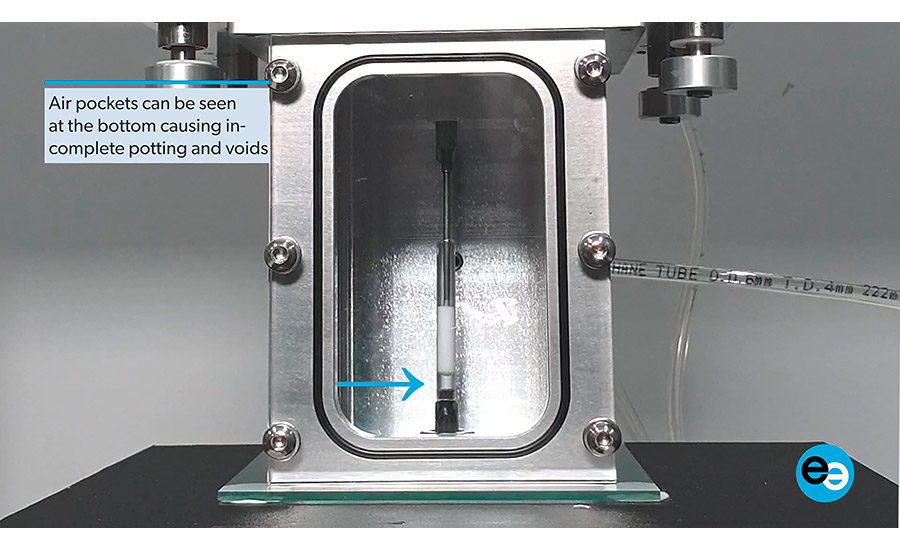Case Study
Benefits of Potting Electronics in a Vacuum
Vacuum potting is mainly aimed at electronic components with small openings and complex internal structures.






The potting of electronic components involves filling the assembly with a compound such as liquid resin (e.g., epoxy, silicone, polyurethane) to protect it from environmental or use conditions like moisture, humidity, and vibration. Any air entrapment in the potting compound can result in air bubbles that may cause performance problems in the finished component.
Potting under vacuum is therefore frequently required to prevent air entrapment, especially with the increasingly small and complex assemblies required in today’s electronics. Through a dispensing application test in the new laboratories of ViscoTec Asia, a customer request recently highlighted the advantages of potting under vacuum.
Customer Needs
The customer initially approached ViscoTec Asia with a request for a solution to a specific challenge. In the application, a hole with a diameter of 2.8 mm had to be potted. The primary goal was to achieve a potting time of less than 10 seconds, completely without any entrapped air. This was made more difficult due to the fact that the casting area below the hole consists of metal coils that are prone to trapping air bubbles.
Initial dosing tests without vacuum showed that the potting could only be completed in 24-32 seconds and at a lower flow rate. In addition, cavities were found in the cured material (see Figure 1). After implementation of the vacuum chamber, as shown in Figure 2, the process could be completed in under 10 seconds and without cavities in the cast material. Potting under vacuum resulted in both higher productivity and better quality.
The tests could be carried out with the standard equipment in ViscoTec Asia’s test laboratories. For this request, the equipment used included a preeflow eco-DUO 2-component dispenser, a tabletop robot, a vacuum pump, and the vacuum chamber.
Encapsulating Sensors and Other Components
Prior to this request, ViscoTec Asia had carried out several dosing tests with the vacuum chamber. In most cases, these were tests for the encapsulation of sensors. As sensors are getting smaller and smaller, encapsulation is required to keep the internal elements in position to make them robust and durable. Vacuum potting is mainly aimed at electronic components with small openings and complex internal structures.
“We know that simplicity is always preferred, so vacuum potting is only recommended when necessary,” said Melvyn Teo, managing director of ViscoTec Asia. “The solution depends on the customer’s expectations, the application and the product design. It is important that we clarify the details in close cooperation with our customers before deciding what is best suited.”
For more information, visit www.preeflow.com/en.
Listen to our podcast with Melvyn Teo!
Looking for a reprint of this article?
From high-res PDFs to custom plaques, order your copy today!








